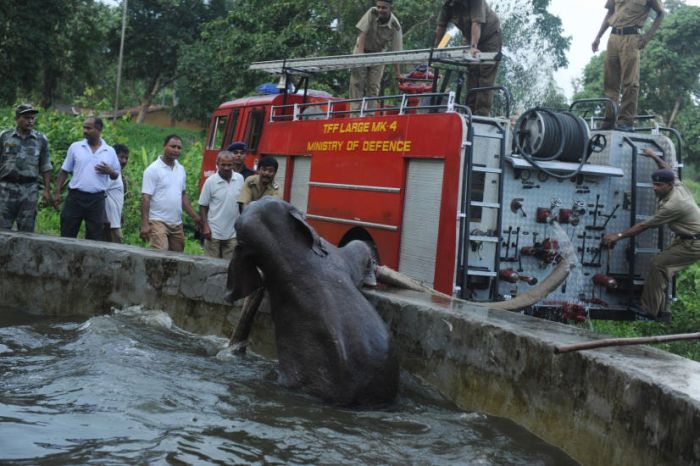|
|
Baby Elephant Rescued From Drowning
|
Female elephant social life revolves around breeding and raising of the calves. A female will usually be ready to breed around the age of thirteen, when she comes into estrus, a short phase of receptiveness lasting a couple of days, for the first time. Females announce their estrus with smell signals and special calls.
Females prefer bigger, stronger, and, most importantly, older males. Such a reproductive strategy tends to increase their offspring's chances of survival.
After a twenty-two-month pregnancy, the mother gives birth to a calf that weighs about 115 kg (250 lb) and stands over 75 cm (2.5 ft) tall. Elephants have a very long development. As is common with more intelligent species, they are born with fewer survival instincts than many other animals. Instead, they rely on their elders to teach them what they need to know. Today, however, the pressures humans have put on the wild elephant populations, from poaching to habitat destruction, mean that the elderly often die at a younger age, leaving fewer teachers for the young. The consequences of this for the next generation are not known.
A new calf is usually the center of attention for herd members. Adults and most of the other young will gather around the newborn, touching and caressing it with their trunks. The baby is born nearly blind and at first relies almost completely on its trunk to discover the world around it.
|
|









